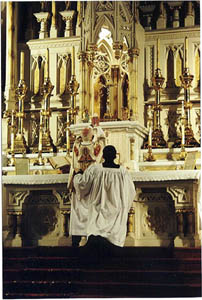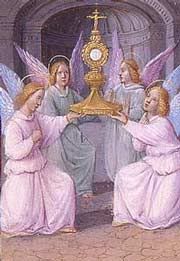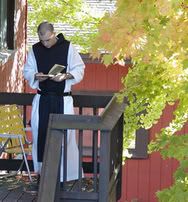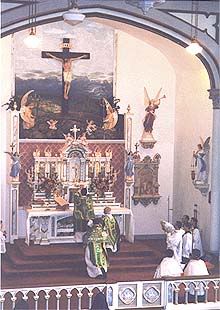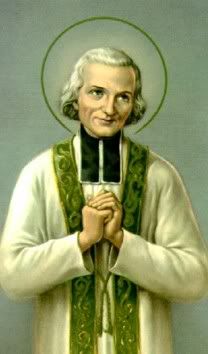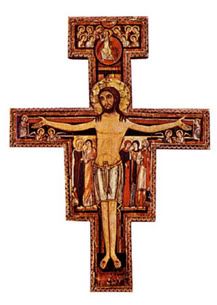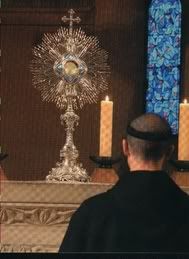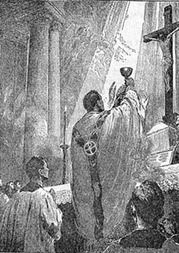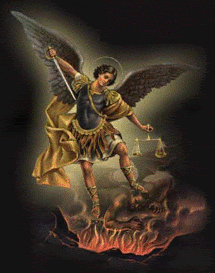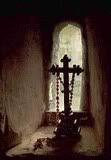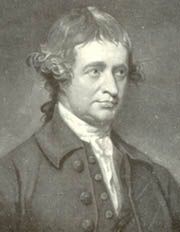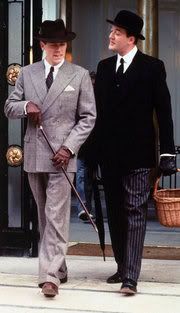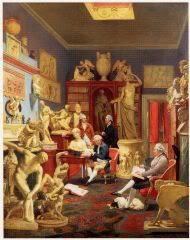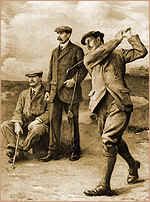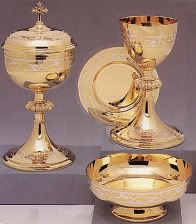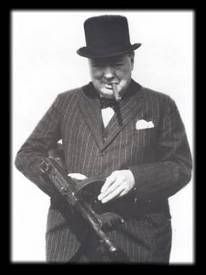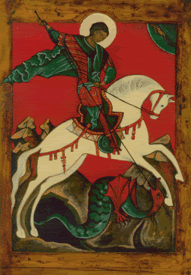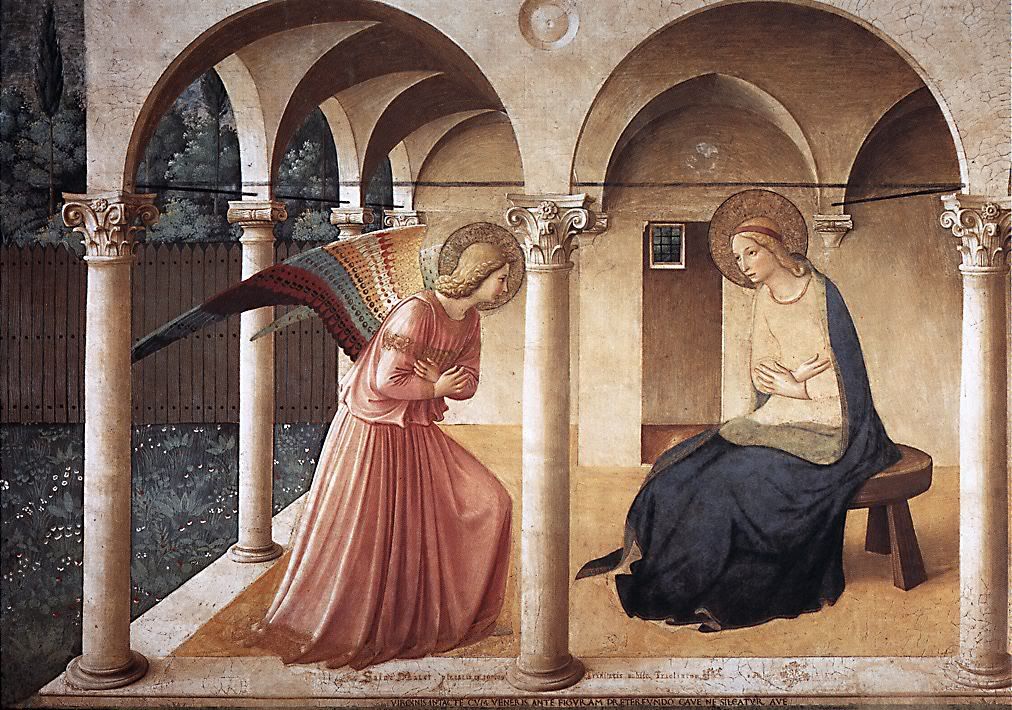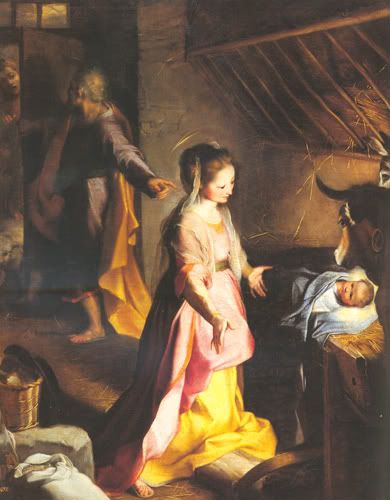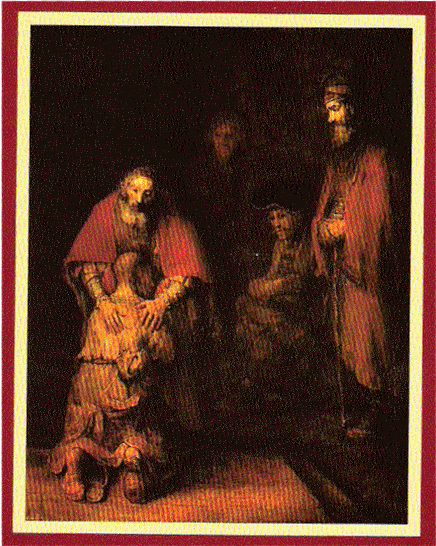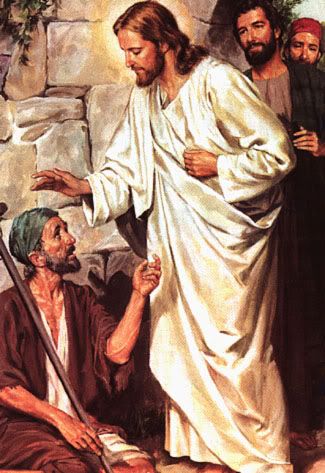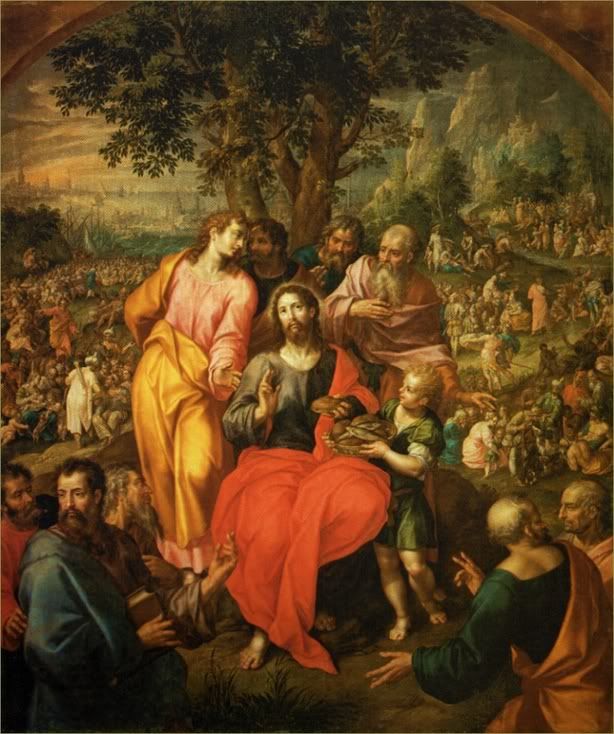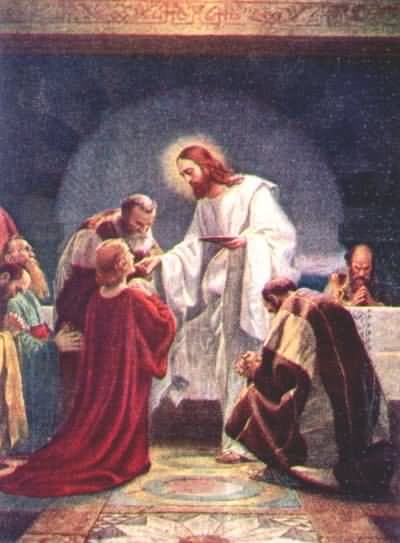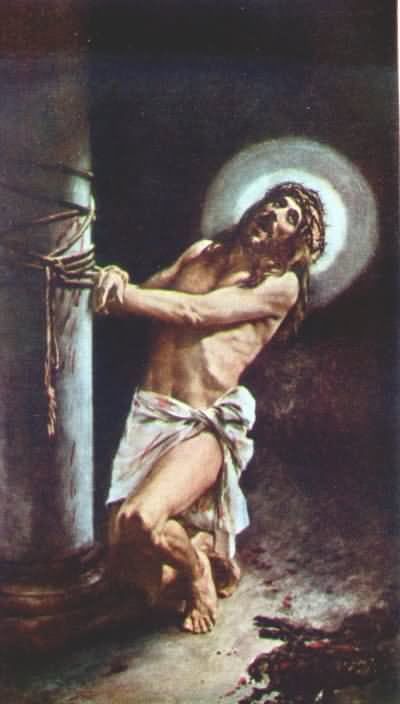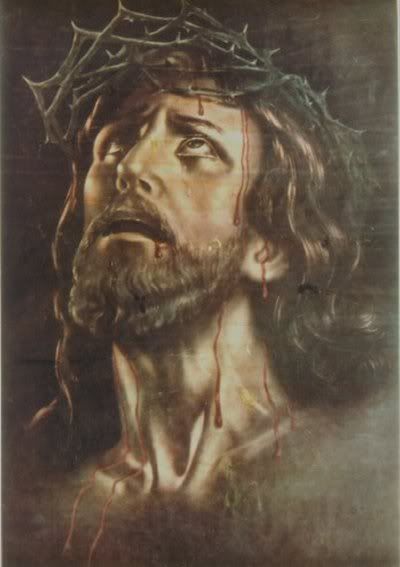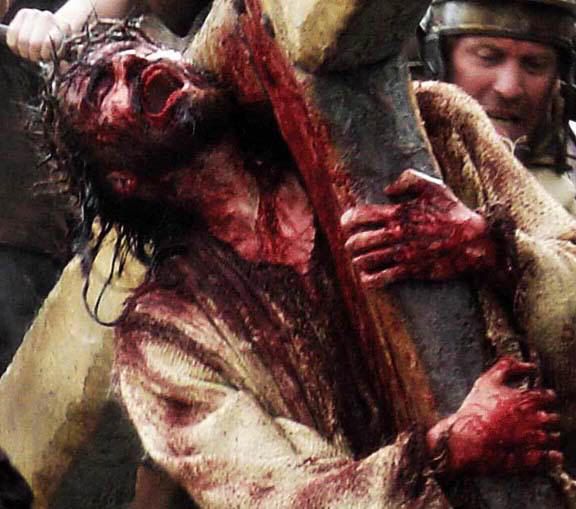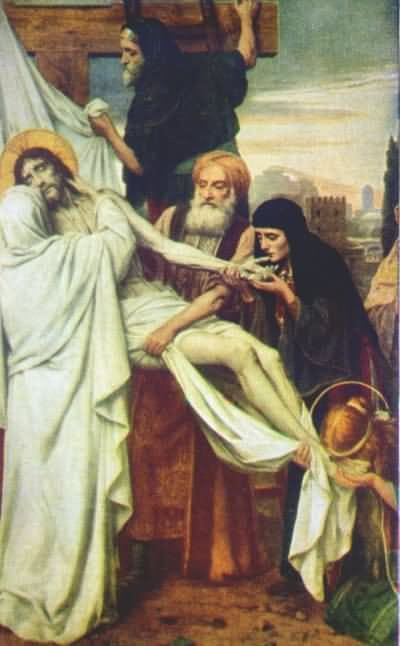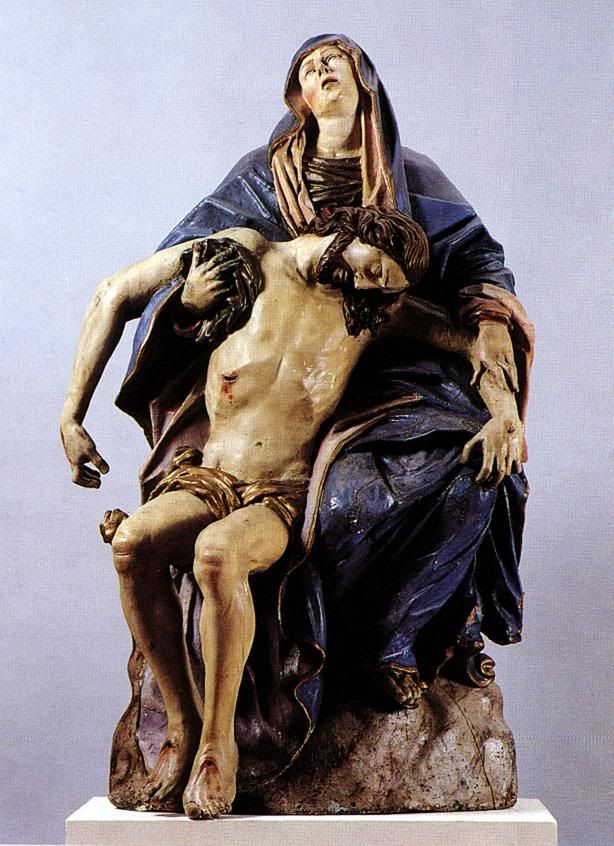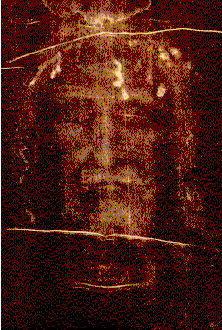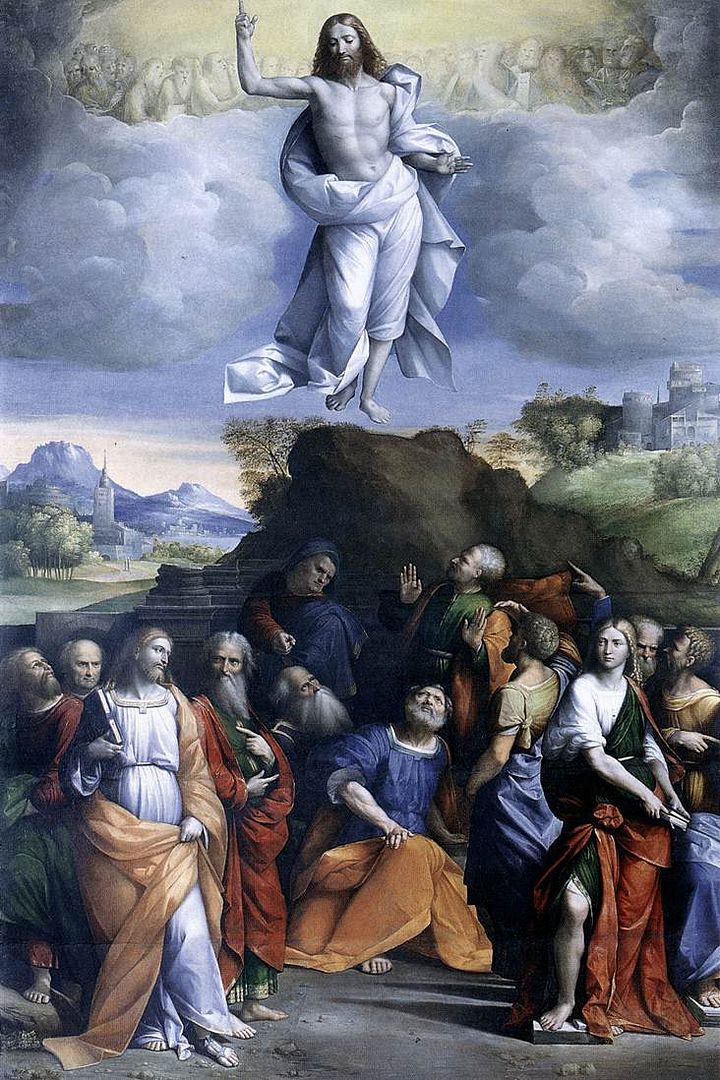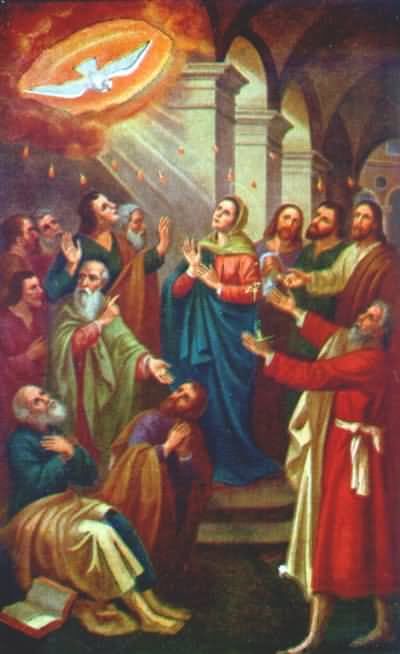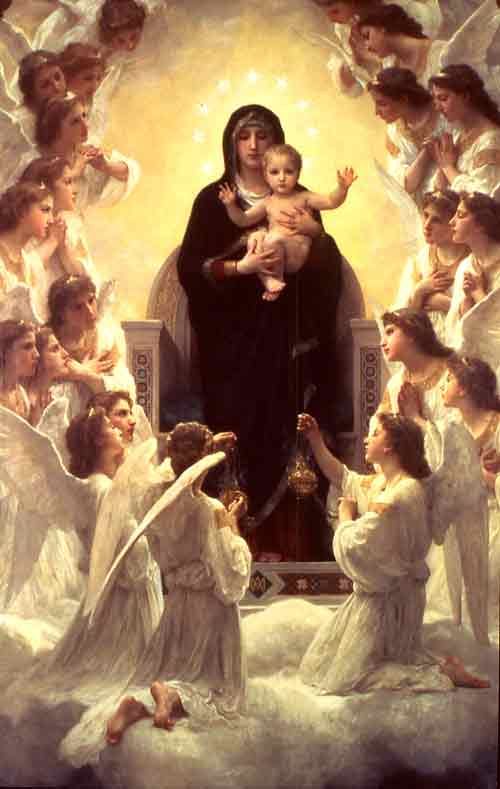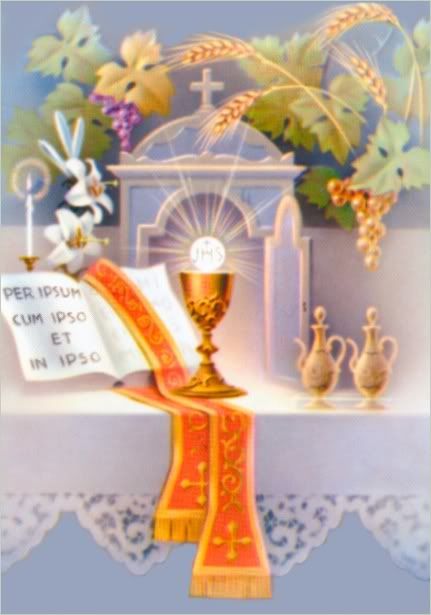Saturday, April 16, 2005
This Is Something I Don't Get
Why has someone gone through the trouble of setting up financials for blogs? Who is "buying" shares that don't exist? How can you put a value on something that is completely dependent on the author's willingness to stick with it, skill, and taste?
What is Blogshares all about? Is this a game? What is the purpose? Is this like a fantasy baseball league with blogs? Who would be nerdy enough to find that fascinating?
What is Blogshares all about? Is this a game? What is the purpose? Is this like a fantasy baseball league with blogs? Who would be nerdy enough to find that fascinating?
An Old Aquaintance of Mine Has A CD Out
Gavin Watt was once the force behind the King's Royal Regiment of New York, known as Johnson's Green's or the Royal Yorkers, a Canadian group recreating the loyalist role in the American Revolution.
What I did not know is that Gavin is part of a musical group called the Idle 'Prentices, who have come out with a CD of 18th Century music called Gin Lane, which you can buy here. While you are there, take a tour through the Gallery, it is hilarious.
What I did not know is that Gavin is part of a musical group called the Idle 'Prentices, who have come out with a CD of 18th Century music called Gin Lane, which you can buy here. While you are there, take a tour through the Gallery, it is hilarious.
Patriots' Day Weekend Off To A Good Start
The Sox demolished the Devil Dogs 10-0 at Fenway.
The weather is great, sunny but a still a bit cool, though it is to improve as the weekend goes on.
I have seen not only daffodils, but tulips and azaleas in bloom, as well as forsythia that has turned yellow, and many pink or white flowering trees doing their thing.
The swan boats return to the Public Garden today.
And there is skirmishing between His Majesty's troops and the Massachusetts rebels today, tomorrow, and Monday.
The weather is great, sunny but a still a bit cool, though it is to improve as the weekend goes on.
I have seen not only daffodils, but tulips and azaleas in bloom, as well as forsythia that has turned yellow, and many pink or white flowering trees doing their thing.
The swan boats return to the Public Garden today.
And there is skirmishing between His Majesty's troops and the Massachusetts rebels today, tomorrow, and Monday.
Friday, April 15, 2005
18th Century Fashion Plates
Patriots' Day is Monday, a legal holiday in Massachusetts marked by the running of the Boston Marathon and the re-enactments of the Battles of Lexington and Concord.
Every year at this time, my thoughts turn inexorably to the 18th century.
One area I have always found interesting even before my own re-enacting days is the variety of light infantry caps in the various British regiments from 1771-1776.
In 1771, every regiment in the British Army had to create a company (38 privates and corporals, 1 drummer, 2 serjeants, 2 lieutenants, 1 captain) of light infantry to act as skirmishers and scouts for the regiment. In wartime, the light infantry companies, along with the grenadier companies, of each regiment were taken away from the regiments by the army commanders and formed into light infantry and grenadier battalions. This practice only ended with the Duke of Wellington who did not like taking the best men away from the line regiments, as it diluted the quality of the line.
The army command (essentially the King and his Adjutant General) ordered the formation of the companies, but only gave a broad idea of how they should be uniformed. There was no mandatory standard pattern, and every regiment did what the colonel thought best, at least as regards headgear.
There was greater uniformity with regard to other equipment. Black belting, rather than white, and a tomahawk (discarded after the war as they were never used in the fighting in America), a poder horn to prime with (also discarded because it slowed down the rate of fire, and was not used in America), short gaiters at all times rather than the long ones that come up to the knee used by the rest of the soldiers of the regiment, some sort of shoulder wings (regimental lace at the top of the arm: there was variation in the pattern, including some regiments that used a van dyck pattern wing), a red waistcoat, made from the previous year's coat, rather than a white one, and a shortened jacket, 3 inches shorter than coats worn by the battalion soldiers (80% of every regiment), and the grenadiers, were standard
The most common pattern was a leather skull cap, the skull protected by 3 metal chains, with a rounded frontpiece. The regimental number (here a brass X--the Roman numeral 10--inlaid into the leather) and the royal cypher commonly appeared. That is the sort of cap worn by my old regiment's light bobs:

10th Regiment of Foot Light Infantry Company awing the Massachusetts rebels
The Light Infantry of the 64th Regiment of Foot closely followed the trend seen in the 10th Regiment: skull caps with chains and a rounded black leather frontpiece with the royal cypher and the regimental number.

Light Infantry of the 64th skirmishing with the rebels on the return from Concord.
But there were many variations.
For instance, the 5th Regiment of Foot added the regimental badge of St. George slaying the dragon in metal, a longish red horsehair crest (not visible behind the lion-face of the crest in the photo) a red turban around the edge of the cap, and a visor to the basic design.

Serjeant, 5th Regiment of Foot Light Infantry Company
And the 4th or King's Own Regiment of Foot has a plain skull cap with the frontpiece sharply curved to the left and pointed, a red feather (not in the photo) on the left side, and regiment's badge, the Lion of England, painted below the regimental number.

4th or King's Own Regiment of Foot Light Infantry Company about to fire (except that only the soldier in the foreground has his musket on full cock, the other two will not be able to pull their triggers, as their muskets are only half-cocked, which was the safety position: so the photo was staged and not an action shot)
Meanwhile, the 23rd or Royal Welch Fusiliers painted the frontpiece red, edged it in white, painted the Prince of Wales' feathers (the regimental badge) on the front, added a short brown or black horsehair crest to the top of the skullcap, and a white feather to the side.

23rd or Royal Welch Fusiliers Light Infantry doing what soldiers have always done most, waiting. They are joined by a battalion company private of the 9th Regiment of Foot wearing the uniform in vogue during General Burgoyne's expedition from Canada: the fellow without shoulder wings, but with yellow lapels (facings) and a yellow horsehair crest.
Now, later in the war, the appearance of the light infantry, and of the army as a whole, changed dramatically from the days of the Boston Garrison of 1774-1776. The leather skull cap is gone, along with the regimental jacket, replaced by a round hat and roundabout.

40th Regiment of Foot Light Infantry on picket duty around 1777.
That is a short survey of the variety of light infantry caps in use with re-enactors today. There were other varieties, including cut down cocked hats, and a version with a visor on the back, as well as the front. But those await a re-enacting group that can find evidence suggesting that their 18th century counterparts actually used that version.
On April 15th, 1775, General Thomas Gage, who was both Commander-in-chief of all British troops in North America and Governor of the Province of Massachusetts Bay, ordered the grenadier and light infantry companies of all the regiments of the Boston Garrison to be off duty until further notice. The grenadiers and light infantry would be sent to Concord on the night of April 18th and would be involved in the first fighting of the American War of Independence.
The light infantry of the 4th, 10th, 52nd, and Marines, (and two other companies whose identities are not revealed in the sources unearthed to date), are documented as participating in the fighting on Lexington Green, while the 4th, 10th, and 47th light companies were fired on by the embattled farmers a few hours later at Concord's Old North Bridge.
Every year at this time, my thoughts turn inexorably to the 18th century.
One area I have always found interesting even before my own re-enacting days is the variety of light infantry caps in the various British regiments from 1771-1776.
In 1771, every regiment in the British Army had to create a company (38 privates and corporals, 1 drummer, 2 serjeants, 2 lieutenants, 1 captain) of light infantry to act as skirmishers and scouts for the regiment. In wartime, the light infantry companies, along with the grenadier companies, of each regiment were taken away from the regiments by the army commanders and formed into light infantry and grenadier battalions. This practice only ended with the Duke of Wellington who did not like taking the best men away from the line regiments, as it diluted the quality of the line.
The army command (essentially the King and his Adjutant General) ordered the formation of the companies, but only gave a broad idea of how they should be uniformed. There was no mandatory standard pattern, and every regiment did what the colonel thought best, at least as regards headgear.
There was greater uniformity with regard to other equipment. Black belting, rather than white, and a tomahawk (discarded after the war as they were never used in the fighting in America), a poder horn to prime with (also discarded because it slowed down the rate of fire, and was not used in America), short gaiters at all times rather than the long ones that come up to the knee used by the rest of the soldiers of the regiment, some sort of shoulder wings (regimental lace at the top of the arm: there was variation in the pattern, including some regiments that used a van dyck pattern wing), a red waistcoat, made from the previous year's coat, rather than a white one, and a shortened jacket, 3 inches shorter than coats worn by the battalion soldiers (80% of every regiment), and the grenadiers, were standard
The most common pattern was a leather skull cap, the skull protected by 3 metal chains, with a rounded frontpiece. The regimental number (here a brass X--the Roman numeral 10--inlaid into the leather) and the royal cypher commonly appeared. That is the sort of cap worn by my old regiment's light bobs:

10th Regiment of Foot Light Infantry Company awing the Massachusetts rebels
The Light Infantry of the 64th Regiment of Foot closely followed the trend seen in the 10th Regiment: skull caps with chains and a rounded black leather frontpiece with the royal cypher and the regimental number.
Light Infantry of the 64th skirmishing with the rebels on the return from Concord.
But there were many variations.
For instance, the 5th Regiment of Foot added the regimental badge of St. George slaying the dragon in metal, a longish red horsehair crest (not visible behind the lion-face of the crest in the photo) a red turban around the edge of the cap, and a visor to the basic design.

Serjeant, 5th Regiment of Foot Light Infantry Company
And the 4th or King's Own Regiment of Foot has a plain skull cap with the frontpiece sharply curved to the left and pointed, a red feather (not in the photo) on the left side, and regiment's badge, the Lion of England, painted below the regimental number.

4th or King's Own Regiment of Foot Light Infantry Company about to fire (except that only the soldier in the foreground has his musket on full cock, the other two will not be able to pull their triggers, as their muskets are only half-cocked, which was the safety position: so the photo was staged and not an action shot)
Meanwhile, the 23rd or Royal Welch Fusiliers painted the frontpiece red, edged it in white, painted the Prince of Wales' feathers (the regimental badge) on the front, added a short brown or black horsehair crest to the top of the skullcap, and a white feather to the side.

23rd or Royal Welch Fusiliers Light Infantry doing what soldiers have always done most, waiting. They are joined by a battalion company private of the 9th Regiment of Foot wearing the uniform in vogue during General Burgoyne's expedition from Canada: the fellow without shoulder wings, but with yellow lapels (facings) and a yellow horsehair crest.
Now, later in the war, the appearance of the light infantry, and of the army as a whole, changed dramatically from the days of the Boston Garrison of 1774-1776. The leather skull cap is gone, along with the regimental jacket, replaced by a round hat and roundabout.

40th Regiment of Foot Light Infantry on picket duty around 1777.
That is a short survey of the variety of light infantry caps in use with re-enactors today. There were other varieties, including cut down cocked hats, and a version with a visor on the back, as well as the front. But those await a re-enacting group that can find evidence suggesting that their 18th century counterparts actually used that version.
On April 15th, 1775, General Thomas Gage, who was both Commander-in-chief of all British troops in North America and Governor of the Province of Massachusetts Bay, ordered the grenadier and light infantry companies of all the regiments of the Boston Garrison to be off duty until further notice. The grenadiers and light infantry would be sent to Concord on the night of April 18th and would be involved in the first fighting of the American War of Independence.
The light infantry of the 4th, 10th, 52nd, and Marines, (and two other companies whose identities are not revealed in the sources unearthed to date), are documented as participating in the fighting on Lexington Green, while the 4th, 10th, and 47th light companies were fired on by the embattled farmers a few hours later at Concord's Old North Bridge.
Sox Beat the Yankees Last Night
The final was 8-5.
Always nice to beat that other city further down the Atlantic coast.
Always nice to beat that other city further down the Atlantic coast.
John Allen Says Cardinal Ratzinger's Support Is Strong
But it might not be at the 2/3 level. He appears to have more support than anyone else right now (though what will-o-the-wisp information this is based on, since all the cardinals are swarn to silence regarding the media, is anybody's guess).

Ratzinger's homily at the Holy Father's funeral (showing sensitivity and emotion in addition to undoubted intellect and ability), his doctrinal closeness to John Paul (making his election a vote of confidence in John Paul, like voting for George H.W. Bush to give Ronald Reagan a third term), his age meaning that the ambitious among the cardinals get another try in a few years are all factors in his favor.
There is always the worry that those who go into a conclave as pope come out a simple cardinal.
So I would not bet on this. And I certainly would not say it is wrapped up. I think the most likely scenario is that he will fall short of the 2/3, and then people will fall back on Arinze as an excellent compromise candidate.
I think the conclave will be over in less than 10 days.

Ratzinger's homily at the Holy Father's funeral (showing sensitivity and emotion in addition to undoubted intellect and ability), his doctrinal closeness to John Paul (making his election a vote of confidence in John Paul, like voting for George H.W. Bush to give Ronald Reagan a third term), his age meaning that the ambitious among the cardinals get another try in a few years are all factors in his favor.
There is always the worry that those who go into a conclave as pope come out a simple cardinal.
So I would not bet on this. And I certainly would not say it is wrapped up. I think the most likely scenario is that he will fall short of the 2/3, and then people will fall back on Arinze as an excellent compromise candidate.
I think the conclave will be over in less than 10 days.
Great Post On the Eucharist
Thursday, April 14, 2005
Justifying the Unjustifiable
Wayward American Catholics
The Church is not governed by polls or public opinion, even the opinion of the faithful. It is governed by eternal and immutable truth as embodied in tradition and the dogma of God's one true Church on earth.
Good post on the topic over at Ad Majorem Dei Gloriam.
Good post on the topic over at Ad Majorem Dei Gloriam.
Tuesday, April 12, 2005
The Calendar Says We Are Well Into Spring, Right?
We had a glorious weekend, with temperatures in the 60s, maybe even near 70, and bright sunny skies. Numerous flowers and trees are blooming. The dredging of the swan pond at the Public Garden is done and the water is back in.
But Monday and today, temperatures have struggled to get past 40F. And it was snowing a little while ago.
And I have a head and chest cold, just like the ones I've been having, one after the other, since around Thanksgiving.
Spring, or still Winter? We report. You decide
But Monday and today, temperatures have struggled to get past 40F. And it was snowing a little while ago.
And I have a head and chest cold, just like the ones I've been having, one after the other, since around Thanksgiving.
Spring, or still Winter? We report. You decide
A Point Worth Considering
Maybe
Sacrilege On Line
Alleged consecrated Host from Mass said by Pope John Paul the Great for sale on e-Bay.
The Catholic Encyclopedia has this to say about that:
"Indeed deliberate and notable irreverence towards the Holy Eucharist is reputed the worst of all sacrileges."
Update:
Good news. Dom Bettinelli says a faithful Catholic bought the Host and is going to make sure that proper disposal will take place.
The Catholic Encyclopedia has this to say about that:
"Indeed deliberate and notable irreverence towards the Holy Eucharist is reputed the worst of all sacrileges."
Update:
Good news. Dom Bettinelli says a faithful Catholic bought the Host and is going to make sure that proper disposal will take place.
The Real Opening Day: The One At Fenway
A good day, if chilly.
The guys received their World Series rings.
The World Championship banner was unfurled.
And the Yankees were duly spanked 8-1.
The guys received their World Series rings.
The World Championship banner was unfurled.
And the Yankees were duly spanked 8-1.
George Neumayr Points Out
Monday, April 11, 2005
Dale Price Explains Why I Don't Want the Burden of Home Ownership
Unlike him, I'm lucky if I can screw in a lightbulb.
Beyond that, I'd have to call in a contractor for every little thing that went wrong.
Beyond that, I'd have to call in a contractor for every little thing that went wrong.
Sox Open At Fenway Against the Yankees Today
Baseball is really back in Boston, along with the Spring weather.

Though with a record of 2-4 in their first two series, and a berth in the cellar of the American League East, and pitching that promises to be pathetic (David Wells looks like a misplaced hope after his first two starts), the greatest joys of the day may be the Fenway Franks, Legal Seafood Clam Chowder, and fried dough from the concession stands and vendors outside Fenway.

Though with a record of 2-4 in their first two series, and a berth in the cellar of the American League East, and pitching that promises to be pathetic (David Wells looks like a misplaced hope after his first two starts), the greatest joys of the day may be the Fenway Franks, Legal Seafood Clam Chowder, and fried dough from the concession stands and vendors outside Fenway.
What Is the Unfinished Work of John Paul the Great?
There are a number of issues that come to mind as unfinished business, that will need the attention of the next Supreme Pontiff.
First, there is the compilation and vetting of a shorter version of the Catechism that is suitable for instruction. Catholic education, whether in CCD classes, or in the religion classes of parochial schools is atrocious. Much too much, "Jesus was nice. Be like Jesus and be nice" and far too little actual instruction in the nuts and bolts of the faith. How many kids being confirmed in whatever grade they do that now (it was 8th grade when I was confirmed in 1978) could tell you anything about the devotion to the Sacred Heart? About First Fridays? About Eucharistic Adoration? First Saturdays? The saints? Their own patron saint? About the Immaculate Heart of Mary? About the Seven Last Words? About the Five Sacred Wounds? About Our Lady of Fatima? Our Lady of Mount Carmel? The Liturgy of the Hours? The structure of the Mass? The history of the Mass? The Rosary? The Stations of the Cross? About the Seven Deadly Sins? The Four Marks of the Church? The Corporal Works of Mercy? What Corpus Christi means and when and why and how it is celebrated? About the cycle of the liturgical year? The Four Last Things? About month's minds or anniversary Masses? About Purgatory?
Maybe a new Q&A format version of the Catechism is not a panacea. It probably is not. But it is a start in the long process of overhauling Catholic religious instruction so that kids actually know something about the Faith.
Next there are several causes that need to be shepherded forward. First and foremost of them are the causes of John Paul the Great himself, and that of Blessed Mother Theresa of Calcutta. Then there are others that deserve attention, including Blesseds Pier Giorgio Frassati, Fra Angelico, Father Damien of Molokai, Rose Hawthrone Lathrop, Anna Catherine Emmerich,
Julian of Norwich, and Hildegard von Bingen, as well as Venerables like Pope Pius XII, Archbishop Fulton Sheen, John Henry Cardinal Newman, and people with no official cause like Malcolm Muggeridge, Hans Urs von Balthasar, Monsignor Ronald Knox, and Flannery O'Connor.
Of course, only the first two of these are obviously deserving of sainthood by acclamation. But a helping hand from the papacy would move the others' causes along.
The issue of homosexuals in the priesthood cries out for redress. Again, 85% of the abuse encountered in the American scandal was done to post-pubescent boys. For far too long, even a decade or two before Vatican II, the priesthood was considered both a good place to hide from their sexuality and a "happy hunting ground" for homosexuals who want to prey on teenage boys. While it is true that not all homosexuals prey upon little boys, the risk is much greater than for a heterosexual priest to prey on teenage girls. So the only way to solve the problem and prevent further occurances from men being ordained from this point on (I don't think you can do much with priests already ordained) to use the battery of psychological testing prospective priests already undergo to bar homosexuals from the priesthood.
Allegedly, there has been some sort of disciplinary letter circulating through the Vatican, that may or may not have been derailed because of bogus psychological testimony. It is time to either dust that off and get it back on track, or just re-issue the 1961 letter issued under John XXIII that more or less said the same thing, but with more emphasis, and making it binding on the orders (and they will howl, as most people who have studied the problem say that the level of homosexuality in the religious orders is far in excess of the level in the diocesan priesthood). But a new Pope has the ability to disregard opinion and make his views felt, and obeyed, in ways that a Pope who has been around so long that he is part of the furniture of life cannot. New brooms sweep clean, as they say.
Liturgy is an issue that needs much attention. There has been sporadic negotiation for years now on the issue of an "universal indult" that would allow much greater freedom for the sacrifice of the traditional Latin Mass. But those negotiations have not gotten very far. It has been 17 years since Ecclesia Dei, and still many bishops block the Latin Mass. Others grudgingly put roadblocks, poison pills, and other obstacles in the way instead of permitting it to flourish. We see that in Boston now, as the Archdiocese is jerking the Latin Mass community at Holy Trinity around shamefully, preparing to close its parish, not offering it a suitable alternative, preventing the FSSP from getting established in Boston, and so on.
But aside from that, liturgy covers a lot of ground, from translation to music, to church design, to the centrality of the Tabernacle, to adherence to the rubrics. GIRM has been a good starting point in places were it has not been used by the local bishop as an excuse to implement the liberal liturgical desires of the day. Charlotte's bishop just issued sensible new guidelines on how GIRM will be implemented there. Boston has done a creditable job with it. But there are places like Seattle, where it was used to wipe out private prayer after Communion, and other traditional practices. This needs to be addressed by the Holy See knuckling the local bishops who are abusing GIRM.
Music. Where do you begin? Getting rid of 90% of the output of Haugen and Haas would be a good start. Trimming the use of protestant hymns would be another. Amazing Grace is nice, but you don't need to hear it so often.
But is this kind of crusade, though desperately needed, the sort of thing a Pope can afford to spend must time on? Probably not. A "universal indult" would step on a lot of tender bishop toes. Popes tend not to spend too much time on issues of liturgical correctness. Actually, John Paul was exceptional for the amount of time he allotted to it, and the fact that he put someone competent and orthodox in charge of it, Arinze.
The issue of political figues (including judges) and abortion needs more attention from Rome. Thee ought to be a unified position dictated by Rome, and that position ought to be that any judge or office holder who advances the cause of abortion with their vote or their decision is no longer a Catholic in good standing, and may not receive the Blessed Sacrament. The same holds true for Catholics in office who support embryonic stem cell research or human cloning, or euthanasia. Innocent life is a rock bottom minimum that requires every Catholic to bend every effort within their means to protect.
Refom of the out-of-control annullment process must also come. Americans account for some 35,000 out of 56,000 annullments granted by the Church each year. Something has to be done about these American tribunals, and those in the Vatican who are ratifying them on second scrutiny.
The papal bureaucracy itself needs to become larger, more efficient, and more savy and sophisticated. Papal information about what is going on in local churches needs to come from some other source than the local bishop, or the media. A system of inspectors and sources needs to be put in place in every diocese. And someone has to sift through this information intelligently, see patterns, and report them to the Holy Father and the relevant department heads in the Curia. I doubt this will happen, because one of the liberal groaning points in the last few days has been over papal "interference" in the running of dioceses and national churches. I think Cardinal George answered that one pretty well: where is all this papal interference other cardinals are complaining about? I don't see it. Would that we had more.
John Paul did a great deal in his long pontificate. But it is surprising how much waits on the plate of the next pope.
But notice what is not on the plate: liberalizing the dogma concerning abortion, contraception, women priests, married priests, remarriage after divorce alone, gay "marriage". Those are off the table. And will always be so.
First, there is the compilation and vetting of a shorter version of the Catechism that is suitable for instruction. Catholic education, whether in CCD classes, or in the religion classes of parochial schools is atrocious. Much too much, "Jesus was nice. Be like Jesus and be nice" and far too little actual instruction in the nuts and bolts of the faith. How many kids being confirmed in whatever grade they do that now (it was 8th grade when I was confirmed in 1978) could tell you anything about the devotion to the Sacred Heart? About First Fridays? About Eucharistic Adoration? First Saturdays? The saints? Their own patron saint? About the Immaculate Heart of Mary? About the Seven Last Words? About the Five Sacred Wounds? About Our Lady of Fatima? Our Lady of Mount Carmel? The Liturgy of the Hours? The structure of the Mass? The history of the Mass? The Rosary? The Stations of the Cross? About the Seven Deadly Sins? The Four Marks of the Church? The Corporal Works of Mercy? What Corpus Christi means and when and why and how it is celebrated? About the cycle of the liturgical year? The Four Last Things? About month's minds or anniversary Masses? About Purgatory?
Maybe a new Q&A format version of the Catechism is not a panacea. It probably is not. But it is a start in the long process of overhauling Catholic religious instruction so that kids actually know something about the Faith.
Next there are several causes that need to be shepherded forward. First and foremost of them are the causes of John Paul the Great himself, and that of Blessed Mother Theresa of Calcutta. Then there are others that deserve attention, including Blesseds Pier Giorgio Frassati, Fra Angelico, Father Damien of Molokai, Rose Hawthrone Lathrop, Anna Catherine Emmerich,
Julian of Norwich, and Hildegard von Bingen, as well as Venerables like Pope Pius XII, Archbishop Fulton Sheen, John Henry Cardinal Newman, and people with no official cause like Malcolm Muggeridge, Hans Urs von Balthasar, Monsignor Ronald Knox, and Flannery O'Connor.
Of course, only the first two of these are obviously deserving of sainthood by acclamation. But a helping hand from the papacy would move the others' causes along.
The issue of homosexuals in the priesthood cries out for redress. Again, 85% of the abuse encountered in the American scandal was done to post-pubescent boys. For far too long, even a decade or two before Vatican II, the priesthood was considered both a good place to hide from their sexuality and a "happy hunting ground" for homosexuals who want to prey on teenage boys. While it is true that not all homosexuals prey upon little boys, the risk is much greater than for a heterosexual priest to prey on teenage girls. So the only way to solve the problem and prevent further occurances from men being ordained from this point on (I don't think you can do much with priests already ordained) to use the battery of psychological testing prospective priests already undergo to bar homosexuals from the priesthood.
Allegedly, there has been some sort of disciplinary letter circulating through the Vatican, that may or may not have been derailed because of bogus psychological testimony. It is time to either dust that off and get it back on track, or just re-issue the 1961 letter issued under John XXIII that more or less said the same thing, but with more emphasis, and making it binding on the orders (and they will howl, as most people who have studied the problem say that the level of homosexuality in the religious orders is far in excess of the level in the diocesan priesthood). But a new Pope has the ability to disregard opinion and make his views felt, and obeyed, in ways that a Pope who has been around so long that he is part of the furniture of life cannot. New brooms sweep clean, as they say.
Liturgy is an issue that needs much attention. There has been sporadic negotiation for years now on the issue of an "universal indult" that would allow much greater freedom for the sacrifice of the traditional Latin Mass. But those negotiations have not gotten very far. It has been 17 years since Ecclesia Dei, and still many bishops block the Latin Mass. Others grudgingly put roadblocks, poison pills, and other obstacles in the way instead of permitting it to flourish. We see that in Boston now, as the Archdiocese is jerking the Latin Mass community at Holy Trinity around shamefully, preparing to close its parish, not offering it a suitable alternative, preventing the FSSP from getting established in Boston, and so on.
But aside from that, liturgy covers a lot of ground, from translation to music, to church design, to the centrality of the Tabernacle, to adherence to the rubrics. GIRM has been a good starting point in places were it has not been used by the local bishop as an excuse to implement the liberal liturgical desires of the day. Charlotte's bishop just issued sensible new guidelines on how GIRM will be implemented there. Boston has done a creditable job with it. But there are places like Seattle, where it was used to wipe out private prayer after Communion, and other traditional practices. This needs to be addressed by the Holy See knuckling the local bishops who are abusing GIRM.
Music. Where do you begin? Getting rid of 90% of the output of Haugen and Haas would be a good start. Trimming the use of protestant hymns would be another. Amazing Grace is nice, but you don't need to hear it so often.
But is this kind of crusade, though desperately needed, the sort of thing a Pope can afford to spend must time on? Probably not. A "universal indult" would step on a lot of tender bishop toes. Popes tend not to spend too much time on issues of liturgical correctness. Actually, John Paul was exceptional for the amount of time he allotted to it, and the fact that he put someone competent and orthodox in charge of it, Arinze.
The issue of political figues (including judges) and abortion needs more attention from Rome. Thee ought to be a unified position dictated by Rome, and that position ought to be that any judge or office holder who advances the cause of abortion with their vote or their decision is no longer a Catholic in good standing, and may not receive the Blessed Sacrament. The same holds true for Catholics in office who support embryonic stem cell research or human cloning, or euthanasia. Innocent life is a rock bottom minimum that requires every Catholic to bend every effort within their means to protect.
Refom of the out-of-control annullment process must also come. Americans account for some 35,000 out of 56,000 annullments granted by the Church each year. Something has to be done about these American tribunals, and those in the Vatican who are ratifying them on second scrutiny.
The papal bureaucracy itself needs to become larger, more efficient, and more savy and sophisticated. Papal information about what is going on in local churches needs to come from some other source than the local bishop, or the media. A system of inspectors and sources needs to be put in place in every diocese. And someone has to sift through this information intelligently, see patterns, and report them to the Holy Father and the relevant department heads in the Curia. I doubt this will happen, because one of the liberal groaning points in the last few days has been over papal "interference" in the running of dioceses and national churches. I think Cardinal George answered that one pretty well: where is all this papal interference other cardinals are complaining about? I don't see it. Would that we had more.
John Paul did a great deal in his long pontificate. But it is surprising how much waits on the plate of the next pope.
But notice what is not on the plate: liberalizing the dogma concerning abortion, contraception, women priests, married priests, remarriage after divorce alone, gay "marriage". Those are off the table. And will always be so.
Kudos To Against the Grain
Christopher at Against the Grain/The Ratzinger Fan Club has assembled some of the recent spate of commentary on my first choice for the next Pope.
Yet, the "progessives" really hate this man, just the way secular liberals hated Ronald Reagan and hate George W. Bush. That, in my book, is an excellent reason to make him the next Pope.
Personally, I have struggled with some of his writings. I find his prose quite difficult to get through. Keep in mind, it is being translated from German by intermediaries who are not always masters of style. But beyond that, his background is in theology and philosophy, areas that are virgin territory as far as I am concerned.
But relying on synopses of his thought, I can see that much of what the Cardinal has said in his writings I agree with, even if I am baffled by his process of getting there.
Like Ronald Reagan and, more to the point, John Paul II, this man was a liberal once. At Vatican II, he was an adviser to one of the more "progressive" cardinals. But being the point man for reforming the reform has placed him in a position where he can see what went wrong when the Church, in a great many dioceses and parishes, went beyond the letter of Vatican II, which must be understood in the context of thousands of years of Church tradition and custom, to the all-sweeping away "Spirit of Vatican II," liberal's favorite catch-phrase to envoke to get what they want.
Arinze or Ratzinger? Both are good. Arinze has been excellent in trying to stamp out liturgical abuses. Ratzinger has tried to stamp out theological abuses, but sometimes comments on the liturgical ones as well. Arinze sometimes comments on the broader theological issues. And there is much to recommend both men. I would be happy with either, or with Tettamanzi, or Schonnborn. Any one of the four men is very well placed to carry on the work of John Paul II.
Ratzinger is well placed to be either the next Pope, or have an awful lot to say about who that next Pope is. He has showcased his talents far better than the other Vatican cardinals in the last few weeks, with the Station meditations for Good Friday, and the moving homily at John Paul the Great's funeral.
That does not mean he will be the next Pope. He may not even want it (rumors abound that he offered his resignation several times over the last half-decade). But given the issues at stake, let us hope that, if he is either unwilling to take it himself, or unable to get his first choice into the job, the Holy Ghost will allow him enough influence to block any unsuitable candidates ('progressives") from getting it either.
Yet, the "progessives" really hate this man, just the way secular liberals hated Ronald Reagan and hate George W. Bush. That, in my book, is an excellent reason to make him the next Pope.
Personally, I have struggled with some of his writings. I find his prose quite difficult to get through. Keep in mind, it is being translated from German by intermediaries who are not always masters of style. But beyond that, his background is in theology and philosophy, areas that are virgin territory as far as I am concerned.
But relying on synopses of his thought, I can see that much of what the Cardinal has said in his writings I agree with, even if I am baffled by his process of getting there.
Like Ronald Reagan and, more to the point, John Paul II, this man was a liberal once. At Vatican II, he was an adviser to one of the more "progressive" cardinals. But being the point man for reforming the reform has placed him in a position where he can see what went wrong when the Church, in a great many dioceses and parishes, went beyond the letter of Vatican II, which must be understood in the context of thousands of years of Church tradition and custom, to the all-sweeping away "Spirit of Vatican II," liberal's favorite catch-phrase to envoke to get what they want.
Arinze or Ratzinger? Both are good. Arinze has been excellent in trying to stamp out liturgical abuses. Ratzinger has tried to stamp out theological abuses, but sometimes comments on the liturgical ones as well. Arinze sometimes comments on the broader theological issues. And there is much to recommend both men. I would be happy with either, or with Tettamanzi, or Schonnborn. Any one of the four men is very well placed to carry on the work of John Paul II.
Ratzinger is well placed to be either the next Pope, or have an awful lot to say about who that next Pope is. He has showcased his talents far better than the other Vatican cardinals in the last few weeks, with the Station meditations for Good Friday, and the moving homily at John Paul the Great's funeral.
That does not mean he will be the next Pope. He may not even want it (rumors abound that he offered his resignation several times over the last half-decade). But given the issues at stake, let us hope that, if he is either unwilling to take it himself, or unable to get his first choice into the job, the Holy Ghost will allow him enough influence to block any unsuitable candidates ('progressives") from getting it either.
Sunday, April 10, 2005
More Patronage
Steve Riddle over at Flos Carmeli gave me this idea. It had never occurred to me to put the blog under the protection of one or more saints. I had just not thought in those terms.
This blog has long had (most of the time) the Immaculate Heart of Mary (the traditional image that was in our home when I was a child) and Saint Dominic de Guzman near the links column on the right.
Now, in this period of papal interregnum, I have added Saints Michael the Archangel and Joseph to the top of the page, flanking the arms of the vacant papacy. They are both patrons of the universal Church, and the Church needs them most of all now.
Two of my personal patrons, Saints George and Thomas are now in the links/archives column on the right as well. St. George is just below the Accuweather do-hickey, and the Incredulity of St. Thomas is at the botton of the Archives.
Actually getting the links themselves today has been kind of catch-as-catch-can. Sometimes they come up, sometimes not. Maybe our patrons can do something about that.
Update 4/11:
On the monitor I was using yesterday, the three top-of-the-site images were in a single row across as I intended. And St. George did not force the archives down to the bottom of the page. But on the computer I am using now, only two of the top images go across, with St. Joseph forming a second row. And St. George is forcing the archives below the blog text. Oh well, it is only temporary, since I hope we will have a new Pope by the end of next week. Then I'll play with the template again.
This blog has long had (most of the time) the Immaculate Heart of Mary (the traditional image that was in our home when I was a child) and Saint Dominic de Guzman near the links column on the right.
Now, in this period of papal interregnum, I have added Saints Michael the Archangel and Joseph to the top of the page, flanking the arms of the vacant papacy. They are both patrons of the universal Church, and the Church needs them most of all now.
Two of my personal patrons, Saints George and Thomas are now in the links/archives column on the right as well. St. George is just below the Accuweather do-hickey, and the Incredulity of St. Thomas is at the botton of the Archives.
Actually getting the links themselves today has been kind of catch-as-catch-can. Sometimes they come up, sometimes not. Maybe our patrons can do something about that.
Update 4/11:
On the monitor I was using yesterday, the three top-of-the-site images were in a single row across as I intended. And St. George did not force the archives down to the bottom of the page. But on the computer I am using now, only two of the top images go across, with St. Joseph forming a second row. And St. George is forcing the archives below the blog text. Oh well, it is only temporary, since I hope we will have a new Pope by the end of next week. Then I'll play with the template again.
Novena For the Repose of the Soul of Pope John Paul the Great
We prayed it after Mass today (I did the Novus Ordo thing at St. Francis).
It is in pdf format, so you need Adode Acrobat.
It is in pdf format, so you need Adode Acrobat.
A Legacy Finally Appreciated
Fifty-nine years ago today, my mother and father were married. I lost my father in 1989, and my mother in 1998.
They had been childhood sweethearts. Dad went to fight in World War II, and they married after he was discharged and had spent some time in the Veteran's Hospital recovering from his wound.
Both were the children of immigrants (Ireland and Italy), and lacked money. They had a tough time of it. There was intense family dislike of marrying outside their ethnic groups (not least because it started a trend, so that all but 2 of my father's 6 siblings did so).
When my father was totally disabled after a heart attack at age 52, vacations became a thing of the past. The house they had hoped to buy became a pipedream. Constant contact in the same house for the next 17 years led to friction and other problems, but both stuck it out. "'Til death do you part," actually meant something to them. It did not mean, "Until I can't deal with it anymore."
Still they got me through Catholic schools (not that I learned anything about the Faith that I retained there: those were the early days of the "butterfly curriculum").
Lately, I have come to treasure a legacy I don't know they knew they were passing on. After Vatican II, they left the old missals they had previously used around the house. Mum looked through them from time to time. I used to pour over them, and my Golden Childrens' Bible, especially around Easter when I got my most pious, because we were watching The Greatest Story Ever Told, Jesus of Nazareth, Ben Hur, and The Ten Commandments every night then.
These missals (there were about 4 in the house, including a little mini one whose illustrations were too much like the ones in the missalettes at church) each had a loving written inscription on one of the front pages, magnificent color plates, interesting multi-colored ribbons whose purpose eluded me, a plethora of holy cards tucked into certain pages, and a series of prayers for the Masses of each day of the year that I could not make heads or tails of, since it was so different from the Mass they brought me to at Our Lady of the Assumption in Lynnfield every week. So different from the missals and the Mass that I grew up with, the cheap paperbacks thrown out 4-5 times every year with no good illustration, no treasury of prayers, no references to indulgences (whatever those were).
Then I looked on these relics of a previous age with a mixture of reverence (after all they were books, to which I am inordinately attached) and derision (things were so backward then; all that Latin) especially in my years of teenage/young adult rebellion. But still, I would page through them from time to time. When things in my life were particularly rough, I tended to become even more pious than before. Then I would page through them in greater earnest.
It would be a long time before I discovered the Psalms or The Imitation of Christ, which are now the cornerstones of my spirituality. Then, all I had were these old missals. I did not understand how the Mass they described worked. After all, the readings they contained were all in English, and wasn't the old Mass supposed to have been in Latin? And where were all the "Thees" and "Thous"? The second person is always "You" in these missals: how disappointing.
Still the presence of these books, which I retained after my mother's death (I'm never able to part with a book) worked on my prayer life. In a moment of crisis, a revision of the Exaudi Nos (in English) became part of my nightly prayers. The names of those I pray for have changed a bit, though for the last 9+ years I have pretty much prayed nightly for the same people.
Then in November of 2003, in a then-still-fresh period of crisis, I found myself in Boston one Sunday, and decided to see what the Latin Mass of these missals was all about. Holy Trinity was like a blast from the past, much like Sacred Hearts in Malden, where I had been baptized and attended so many family funerals and anniversary Masses. Grandeur. Reverence. Holiness. Dignity. It took me some time to figure the Mass out, despite 5 years of prep school and college Latin. After all, the pronunciation was different, and so many of the prayers were said silently by the priest. But to my surprise, in the pew in front of me, there was someone using one of the same editions of the St. Joseph's Daily Missal that I had paged through so often.
After a few months of occasional attendance, I found that I understood how the traditional Mass worked. I however stuck with the red paperback missalette that Holy Trinity gives out to those who do not have their own missals. After all, I was used to a missalette. The missal was a book to be treasured and preserved, looked through at home and at leisure. The missalette was something you used at Mass, where the missal's pages, which are gold-edged and very, very thin, might tear, or get soiled, or, Heaven forbid, the cover might get battered.
Well, Easter Sunday I brought a missal to the Sunday Indult Mass. It is not one of my parents' missals, but one I picked up a Sheehan's Religious Goods store downtown. It is the same edition as one of my familial missals, the Saint Joseph's Daily Missal of 1959. It is in better shape than my parents' missals, which have dogeared pages and covers in danger of coming off from frequent use.
Now I understand how the ribbons are used. Now I know why people treasured their missals. Now I appreciate why my parents saved theirs, and why my mother paged through it from time to time. Now I understand why you don't really need the Latin for the propers of each day's Mass (though I know were to get it and would not mind having it, since I read Latin, after a fashion). Now I can use the missal with a sense of continuity with the practice of my parents, grandparents, great grandparents, and so on.
Thanks, Mum and Dad. Keeping those old missals around has finally born fruit. Your son is using one at Mass frequently, and thanks God, and you, for the beauty and reverence of the Mass contained in that Missal.
They had been childhood sweethearts. Dad went to fight in World War II, and they married after he was discharged and had spent some time in the Veteran's Hospital recovering from his wound.
Both were the children of immigrants (Ireland and Italy), and lacked money. They had a tough time of it. There was intense family dislike of marrying outside their ethnic groups (not least because it started a trend, so that all but 2 of my father's 6 siblings did so).
When my father was totally disabled after a heart attack at age 52, vacations became a thing of the past. The house they had hoped to buy became a pipedream. Constant contact in the same house for the next 17 years led to friction and other problems, but both stuck it out. "'Til death do you part," actually meant something to them. It did not mean, "Until I can't deal with it anymore."
Still they got me through Catholic schools (not that I learned anything about the Faith that I retained there: those were the early days of the "butterfly curriculum").
Lately, I have come to treasure a legacy I don't know they knew they were passing on. After Vatican II, they left the old missals they had previously used around the house. Mum looked through them from time to time. I used to pour over them, and my Golden Childrens' Bible, especially around Easter when I got my most pious, because we were watching The Greatest Story Ever Told, Jesus of Nazareth, Ben Hur, and The Ten Commandments every night then.
These missals (there were about 4 in the house, including a little mini one whose illustrations were too much like the ones in the missalettes at church) each had a loving written inscription on one of the front pages, magnificent color plates, interesting multi-colored ribbons whose purpose eluded me, a plethora of holy cards tucked into certain pages, and a series of prayers for the Masses of each day of the year that I could not make heads or tails of, since it was so different from the Mass they brought me to at Our Lady of the Assumption in Lynnfield every week. So different from the missals and the Mass that I grew up with, the cheap paperbacks thrown out 4-5 times every year with no good illustration, no treasury of prayers, no references to indulgences (whatever those were).
Then I looked on these relics of a previous age with a mixture of reverence (after all they were books, to which I am inordinately attached) and derision (things were so backward then; all that Latin) especially in my years of teenage/young adult rebellion. But still, I would page through them from time to time. When things in my life were particularly rough, I tended to become even more pious than before. Then I would page through them in greater earnest.
It would be a long time before I discovered the Psalms or The Imitation of Christ, which are now the cornerstones of my spirituality. Then, all I had were these old missals. I did not understand how the Mass they described worked. After all, the readings they contained were all in English, and wasn't the old Mass supposed to have been in Latin? And where were all the "Thees" and "Thous"? The second person is always "You" in these missals: how disappointing.
Still the presence of these books, which I retained after my mother's death (I'm never able to part with a book) worked on my prayer life. In a moment of crisis, a revision of the Exaudi Nos (in English) became part of my nightly prayers. The names of those I pray for have changed a bit, though for the last 9+ years I have pretty much prayed nightly for the same people.
Then in November of 2003, in a then-still-fresh period of crisis, I found myself in Boston one Sunday, and decided to see what the Latin Mass of these missals was all about. Holy Trinity was like a blast from the past, much like Sacred Hearts in Malden, where I had been baptized and attended so many family funerals and anniversary Masses. Grandeur. Reverence. Holiness. Dignity. It took me some time to figure the Mass out, despite 5 years of prep school and college Latin. After all, the pronunciation was different, and so many of the prayers were said silently by the priest. But to my surprise, in the pew in front of me, there was someone using one of the same editions of the St. Joseph's Daily Missal that I had paged through so often.
After a few months of occasional attendance, I found that I understood how the traditional Mass worked. I however stuck with the red paperback missalette that Holy Trinity gives out to those who do not have their own missals. After all, I was used to a missalette. The missal was a book to be treasured and preserved, looked through at home and at leisure. The missalette was something you used at Mass, where the missal's pages, which are gold-edged and very, very thin, might tear, or get soiled, or, Heaven forbid, the cover might get battered.
Well, Easter Sunday I brought a missal to the Sunday Indult Mass. It is not one of my parents' missals, but one I picked up a Sheehan's Religious Goods store downtown. It is the same edition as one of my familial missals, the Saint Joseph's Daily Missal of 1959. It is in better shape than my parents' missals, which have dogeared pages and covers in danger of coming off from frequent use.
Now I understand how the ribbons are used. Now I know why people treasured their missals. Now I appreciate why my parents saved theirs, and why my mother paged through it from time to time. Now I understand why you don't really need the Latin for the propers of each day's Mass (though I know were to get it and would not mind having it, since I read Latin, after a fashion). Now I can use the missal with a sense of continuity with the practice of my parents, grandparents, great grandparents, and so on.
Thanks, Mum and Dad. Keeping those old missals around has finally born fruit. Your son is using one at Mass frequently, and thanks God, and you, for the beauty and reverence of the Mass contained in that Missal.
Man Do I Feel John's Pain
Because I've been there. Blogger has been behaving a little better for me lately. But not for John at The Inn At the End of the World.





